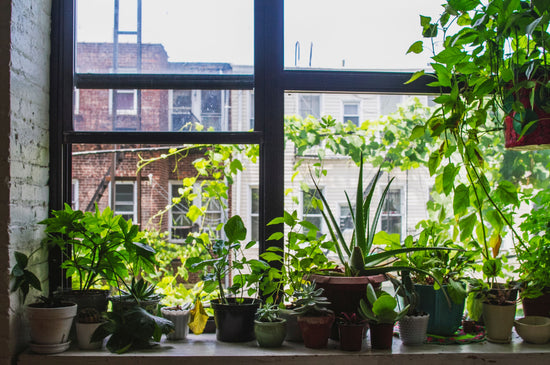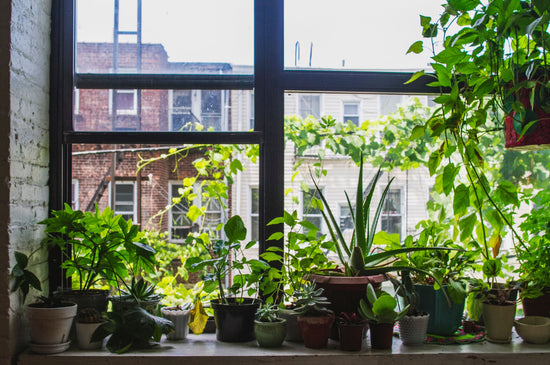Ah, ivy—the plant that instantly brings charm, elegance, and a touch of wild beauty to any space. Whether you’re sprucing up your living room, adding a touch of greenery to your kitchen, or creating a lush outdoor vibe, ivy is your go-to greenery. From its trailing vines to its air-purifying qualities, ivy plants are like the cool, effortless friend of the plant world. Let’s dive into how you can care for ivy plants and where to snag one (or ten) for yourself.
Why Ivy Plants Are Everyone’s Favorite
Picture this: cascading trails of English ivy (Hedera helix) adorning your bookshelves or a lush green wall of Boston ivy creating a dramatic backdrop for your patio. Ivy plants are versatile, low-maintenance, and undeniably Instagram-worthy. Plus, they come in so many varieties—from the robust Devil’s ivy to the delicate Swedish ivy (Plectranthus)—that there’s truly an ivy for every personality and space.
Caring for Your Ivy Plant (Spoiler: It’s Easier Than You Think!)
1. Light Up Their Life
Most ivy varieties love bright, indirect light. English ivy, for example, thrives in a cozy spot near a window but not in direct sunlight, which can scorch its leaves. If you’re growing Swedish ivy outdoors, ensure it gets partial shade to prevent wilting. Got a darker corner? The adaptable Devil’s ivy can tolerate low light like a champ.
2. Don’t Overwater, Please!
Overwatering is the plant-killer equivalent of leaving your milk out in the sun—just don’t do it! Water your ivy when the top inch of soil feels dry. For trailing beauties like Boston ivy plants, well-draining soil is key to avoiding soggy roots. If you’re into hydroponics, Devil’s ivy in water is a thing—and it looks stunning!
3. Keep It Cool
Ivy prefers a cooler climate, ideally between 50-70°F. Be mindful of drafts or heaters; your Hedera helix plant isn’t a fan of extremes.
4. Show Them Some Love
Feed your ivy with a balanced liquid fertilizer every 4-6 weeks during the growing season. This is especially important for vigorous growers like Virginia creeper ivy or Thorndale ivy. Trust me, a little nourishment goes a long way.
Decorating Tips: Let’s Get Creative with Ivy
-
For Indoors: Let your Pothos Snow Queen trail elegantly from a hanging basket or drape your bookshelves with Irish ivy plant. Bonus points if you train it to climb along a trellis for an indoor jungle vibe.
-
For Outdoors: Use Boston ivy or Virginia creeper ivy to create a lush, green wall on your patio. Want a charming touch? Plant English ivy flower varieties in pots to frame your entryway.
Where to Buy Ivy Plants
Ready to transform your space? Head over to Wekiva Foliage’s ivy collection to explore a wide range of ivy varieties. From ground ivy creeping Charlie to hedera glacier, we’ve got the perfect plant to fit your style.
FAQs
1. Can ivy grow indoors?
Absolutely! Varieties like English ivy and Swedish ivy thrive indoors. Just make sure they get bright, indirect light and proper humidity.
2. How do I remove poison ivy safely?
Wear gloves and use a plastic bag to pull out the roots. Dispose of it carefully and wash any exposed skin. If you’re unsure, consult a professional.
3. Can ivy survive in winter?
Many types, like Boston ivy, are hardy and can survive winter. Indoors, keep the temperature stable for varieties like Hedera helix Pittsburgh.
4. What’s the best way to train ivy to climb?
Use a trellis or wireframe and gently secure the vines. Ivy plant types like five-leaf ivy and jubilee ivy love to climb!
5. Can I grow ivy in pots outdoors?
Yes! Choose a pot with drainage holes and use well-draining soil. Ground ivy and creeping ivy varieties look fantastic in outdoor pots.
Your indoor garden dreams are just a plant away. You’ve got this! With a little love and care, your ivy will thrive and transform your space into a lush paradise. Start your ivy journey today with Wekiva Foliage !





